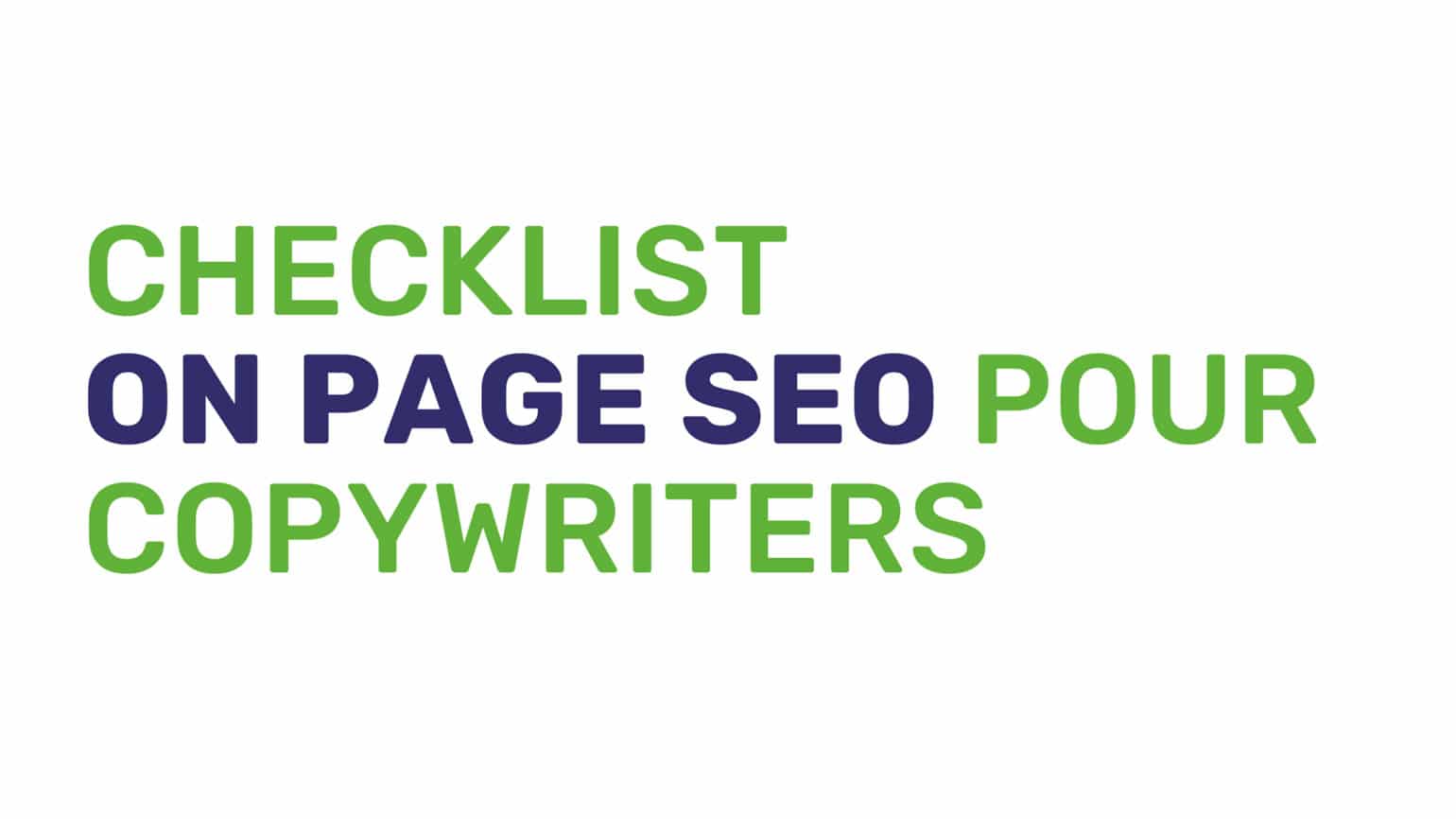On-Page SEO is about creating relevant signals in your text so search engines understand what your page is about. No technical skills are required to improve your SEO — simply use this checklist.
Before you start writing, I recommend a thorough preparation: define your keywords, understand the needs of your target audience, identify the search intent you’re addressing, and figure out how you’ll meet that intent to deliver quality content.
A well-prepared outline will save you a significant amount of time during the writing process and during the review stage (especially if your process involves validation by a third party).
To complement this article, check out this video (in French): introduction au SEO pour équipe de rédaction.
Content
Information quality
❏ The content of the page responds to the audience’s search intent: give a concrete and precise answer to the search for which you want to rank.
❏ The topic provides unique value to your audience: i.e. your content is more comprehensive/interesting/searchable/etc. than your competition’s content in the search results.
Search intent: definition
“Search intent is the reason behind a search query. In other words, it’s what users are looking for when they use a search engine like Google”, explains Ahrefs.
Content organisation
When you write, aim to make your text skim-readable and legible. On the web, we rarely read an entire text (particularly product pages). Why lose your potential customers because they don’t appreciate the look and feel of the content?
❏ Organise information according to the inverted pyramid principle.
❏ The introduction establishes the problem and the directions for resolutions provided in the article.
❏ Organise the article visually using H1, H2, H3 and paragraphs of around 500 characters.
❏ Use descriptive and precise title and intertitles: usually up to 85 characters
❏ Optimise one or more paragraphs of the article for a featured snippet: e.g. answer to a question with a paragraph of 500 characters.
Keyword selection and placement
❏ Select a main keyword
Choose a keyword with a high search volume for which it will be easy to rank, avoid keywords on which there are many ads or for which the Keyword Difficulty criterion is high
❏ Define secondary keywords and a semantic field to use in the article
❏ H1 contains the main keyword.
❏ The introduction/lead contains the main keyword or a synonym.
❏ Define and use words semantically related to the article’s universe
❏ Avoid Keyword Stuffing: strike a balance between too much repetition and a lack of keyword clarity
Keyword: definition
“Words or phrases that users type into search engines to find what they want” says Ahrefs.
Keyword stuffing: definition
“Repeat the same keywords (or similar phrases) in your content to try and manipulate the ranking” explains Ahrefs.
Grammaire et rédaction
Here are a few tips for improving the reading experience of your target audience. When you improve the reading experience of your target audience you indirectly help to optimise your article for search engines.
Web copywriting sounds more like oral discourse than written language as is taught at school. We usually call it ‘interactive’. When in doubt, read your text out loud as if you were talking to someone. If it ‘sounds weird’, simplify your text.
❏ Prefer direct ‘we’ and ‘you’ formulations
-> Avoid impersonal formulations and innuendos.
❏ Use the present indicative tense
-> Avoid the passive voice
❏ Avoided ‘jargon’ or explain it if you are not addressing an expert audience
❏ Explain acronym at their first use in the article
❏ Prefer simple sentences: one piece of information per sentence, a short sentence.
❏ Use few adverbs and coordinators.
Linkings
Check that your text contains the following elements:
❏ Internal link(s) in the form of anchor text to other pages on your own website.
❏ External link(s) to valuable or reputable resources in your field, preferably in the form of anchor text.
❏ Prefer precise and complete anchor texts
-> Avoid ‘Read more’ etc.
Anchor text: definition
A clickable word or phrase in a text that links one web page to another
URL and meta tags
❏ The URL does not contain special characters, dash separates words, they are relatively short
❏ URL contains the keyword.
❏ Write the meta description and page title rather than let your CMS automate them
Pictures and videos
❏ Format picture according to placeholder
❏ Use a light format, example: use tinyjpg tool (it’s free)
❏ Photo and video file names contain the main keyword or synonyms.
❏ Alt-Text of photos and videos are defined and contain the main keyword. (recommended length: 60 characters maximum)
❏ Photo captions are defined and contain the main keyword or synonyms.
Reference and reading
SEO Glossary by Ahrefs
In On-Page SEO: An Actionable Guide by Ahrefs, you’ll find an excellent explanation of search intent, supported by examples. The Ahrefs blog in general is an excellent source of information (OK, my judgement may be subjective as an Ahrefs fan girl).
Moz Academy’s On page SEO Guide is an excellent resource for simple explanations of how to get started in SEO.

